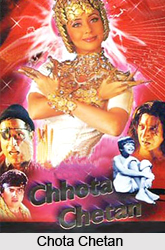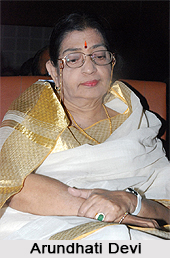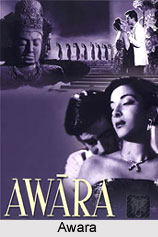 Indian commercial cinema, from the 1960s onwards - when Technicolor became affordable and a regular feature of Indian films - cinema had become the primary source of entertainment for the urban masses. The numbers were daily increasing in leaps and bounds.
Indian commercial cinema, from the 1960s onwards - when Technicolor became affordable and a regular feature of Indian films - cinema had become the primary source of entertainment for the urban masses. The numbers were daily increasing in leaps and bounds.
With changing times television had become an integral part of every household and the cinema halls mushroomed almost everywhere. To a certain extent, it was also a vehicle for educating and modernizing the customs and practices of these masses which had outright serious social themes. There were huge investments in the film industry and the scenario altered more in the 21st century when the corporate houses started investing in the Indian film industry.
A new trend began in the 1970s when the producers and audience became the decision makers as far as the form and content of escapist films were concerned. But there were directors, producers and actors who wanted to make `quality` films as well. At one point of time Indian cinema got divided into two genres - the hard-core commercial movies and parallel cinema. This phenomenon, however, is however losing its ground. The difference between the two has been bridged as the audience today is only looking for good films.
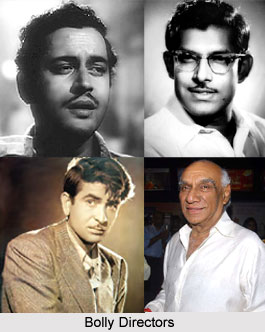 The 1970s witnessed the making of some of the biggest films and the rise of the finest stars in Bollywood. During these crucial years, the definitive evolution of Hindi commercial cinema was taking place towards the star system, escapist films, successful formulae and these features were adopted with some variations by all regional commercial cinemas as well.
The 1970s witnessed the making of some of the biggest films and the rise of the finest stars in Bollywood. During these crucial years, the definitive evolution of Hindi commercial cinema was taking place towards the star system, escapist films, successful formulae and these features were adopted with some variations by all regional commercial cinemas as well.
It is in commercial cinema that one gets to see the `Indianness` of Indian cinema most vividly. In terms of the exploration of complex and multifaceted human experiences, depth of psychological motivation and social vision, popular films may be found wanting. However, in terms of popular response and how popular imagination is shaped, they are highly significant. With their unique combination of fantasy, action films, song, dance and spectacle, Indian commercial films constitute a distinctively Indian form of mass entertainment.
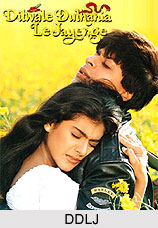 Indian commercial films are basically morality plays, where good triumphs over evil, and the social order, disrupted by the actions of immoral and villainous people, is restored by the power of goodness. Entertainment and moral edification are combined in a way that has direct appeal to the vast masses of moviegoers and the idea of evil is central in Indian commercial filmy discourse.
Indian commercial films are basically morality plays, where good triumphs over evil, and the social order, disrupted by the actions of immoral and villainous people, is restored by the power of goodness. Entertainment and moral edification are combined in a way that has direct appeal to the vast masses of moviegoers and the idea of evil is central in Indian commercial filmy discourse.
Indian commercial films are, as already noted, basically melodramas, and the idea of evil plays a central role in melodramas. As many commentators on melodrama have pointed out, the polarization between good and bad, the clash between moral and immoral, the antagonism between what is whole-some and what`s evil is an inescapably dominant ingredient of melodrama. Melodramas, by definition, deal with characters who are easily recognizable - often stereotypical and who incarnate the forces of good and evil. Evil is a vital ingredient because melodramas seek to establish the authority of a moral universe. By vanquishing the villain, and the evil he or she embodies, melodramas seek to reassert the moral authority of a world that for a while threatened to fall prey to the dark forces of evil. While examining popular Indian films, this becomes very clear.
This concept of evil, so central to Indian commercial cinema, has been evolving over the years in response to diverse social, cultural and political forces. This is readily illustrated in three of the most well known commercial films: Kismet (1943), Awaara (1951) and Sholay (1975). Awaara, was directed by Raj Kapoor and a smash hit not only in India but in foreign countries such as the former Soviet Union, whereas Sholay, is one of the most popular films ever made in India.
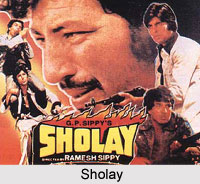 There are a number of genres associated with Indian commercial cinema. Most significant are: mythological films with the fantastic narrations of ancient stories and devotional films that foreground the diverse forms of union with divinity. There are also the romantic films dealing with erotic passion as they confront social conventions; historical films with fanciful stage settings and costumes, social films that explore important social problems and issues; and family melodramas that seek to explore tensions and upheavals within the matrix of the family. There is nothing specifically Indian about these genres. What is distinctive are the ways in which they have been handled by Indian Film Directors, investing them with a characteristically Indian cultural imprint.
There are a number of genres associated with Indian commercial cinema. Most significant are: mythological films with the fantastic narrations of ancient stories and devotional films that foreground the diverse forms of union with divinity. There are also the romantic films dealing with erotic passion as they confront social conventions; historical films with fanciful stage settings and costumes, social films that explore important social problems and issues; and family melodramas that seek to explore tensions and upheavals within the matrix of the family. There is nothing specifically Indian about these genres. What is distinctive are the ways in which they have been handled by Indian Film Directors, investing them with a characteristically Indian cultural imprint.
Indian Commercial films play a central role in the construction of popular Indian consciousness; they are the most dominant and pervasive force responsible for creating in the public mind the notions of heroism, duty, courage, modernity, consumption and glamour. The relationship between Indian commercial cinema and modernity is extremely close. Presently bilingual films are also in vogue. The audience has been looking for a change for a long time and films like Dil Chahata Hai, Life in A Metro, Dor, Mr. And Mrs. Iyer, 15 Park Avenue, Rockford, Iqbal and others are a welcome change.
Genres of Indian Commercial Cinema
There are a number of significant genres associated with Indian commercial cinema. Romantic love, friendship, motherhood, renunciation, relationships, social issues are some of the most compelling among them. As with the genres so with the themes - a distinctively culture-specific approach is adopted, giving these Indian commercial films a characteristically Indian outlook. So when examining what is unique about Indian commercial cinema we need to pay particular attention to questions of theme and genre like Mythological Films, Devotional Films, Action Movies, Patriotic Films, Social Drama, Comic Genre and Romantic Genre.
